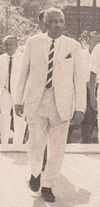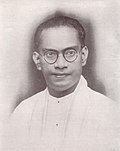Ceylonese parliamentary election, 1952
|
|
|||||||||||||||||||||||||||||||||||||||||||||
|---|---|---|---|---|---|---|---|---|---|---|---|---|---|---|---|---|---|---|---|---|---|---|---|---|---|---|---|---|---|---|---|---|---|---|---|---|---|---|---|---|---|---|---|---|---|
|
|||||||||||||||||||||||||||||||||||||||||||||
|
95 seats to the House of Representatives of Ceylon 48 seats were needed for a majority |
|||||||||||||||||||||||||||||||||||||||||||||
|
|||||||||||||||||||||||||||||||||||||||||||||
|
|||||||||||||||||||||||||||||||||||||||||||||
Dudley Senanayake
United National Party
Dudley Senanayake
United National Party
General elections were held in Ceylon (now Sri Lanka) in 1952.
Prime Minister D.S. Senanayake died in March 1952, and was succeeded by his son, Dudley. The national wave of mourning for Ceylon's first prime minister greatly boosted the UNP's fortunes.
The 1952 election was the first contested by the Sri Lanka Freedom Party, which had broken away from the UNP on a platform of Sinhala nationalism, and the Illankai Tamil Arasu Kachchi (Federal Party), which split from the All Ceylon Tamil Congress over joining the UNP government.
Because the estate Tamils had been stripped of their citizenship by the Senanayake government, the Ceylon Indian Congress, which most of them had supported, was eliminated from Parliament and the Lanka Sama Samaja Party lost seats. The UNP won a majority, mainly at the cost of the CIC and the LSSP.
...
Wikipedia


